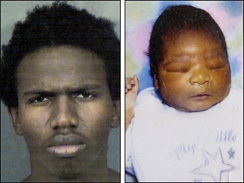Old Cossacks gain new respect in protecting Russian outposts
Graeme Smith:
A trespasser appeared in Boris Matrinitski's front yard one morning in early January: A middle-aged Chinese man, wearing an old uniform, trudging through the deep snow. The man wasn't carrying any bags and didn't seem dressed for the cold.
In another place, in another time, Mr. Matrinitski might have offered him shelter.
But this village of Magilevka is just a few kilometres north of the Ussuri River, which separates China from the vast wilderness of Russia's Far East. Thousands of illegal migrants cross the river every year and the Russian government has become deeply concerned about defending its territory.
Mr. Matrinitski rushed outside and tackled the Chinese man. He restrained his captive and called the border guards, who took him away.
It's not common for Russian villagers to physically throw themselves at people they suspect of being illegal immigrants. But Mr. Matrinitski is a Cossack, a descendant of the horsemen who defended Russia's borders for centuries, and the Kremlin has recently taken steps to revive the Cossacks' warrior spirit.
"Boris reacted honourably," said Georgy Torhov, 67, commander of Mr. Matrinitski and hundreds of other Cossacks around this village. "This interloper was stopped within the first 24 hours. But we need to react even faster."
Once a proud vanguard of the Russian empire, the Cossacks have dwindled in recent years into a glorified social club.
Their ancestors rode horses, mustered armies and defended the borderlands. Now, many Cossacks ride busses, work ordinary jobs and rarely dust off their ceremonial uniforms.
But motivated by gnawing fears about security along its sparsely populated border areas, Russian President Vladimir Putin signed a law in December that aims to reinstate the old paramilitary society. After years of repression under the Soviet Union, the new law gives Cossacks broad powers -- and funding -- to patrol the borders, recruit soldiers, organize disaster-response units, assist the forestry service, maintain public order and fight terrorism.
Branches of the federal government already exist for all these functions, but the Cossacks are viewed as an extra layer of protection in a country that feels increasingly nervous about its security and territorial integrity.
Those may seem like unusual fears for Russia, which still has enough nuclear, biological and chemical weapons to theoretically kill everyone on the planet. But Russia's conventional military has dwindled, along with its shrinking population.
Demographers predict that Russia will suffer a sharp decline in population over the next half-century, losing perhaps a third of its people, and the situation will be worst in the Far East. This region's population has already dwindled by 18 per cent since the Soviet Union imploded in 1991, as the empire abruptly cut support for its farthest outposts.
Russia's Far Eastern Military District has lost more than half its motorized divisions since the Soviet collapse, along with a third of its submarines and half its combat ships. One Far Eastern commander recently complained that so many of his planes and helicopters had fallen into disrepair that half of them couldn't lift off the ground.
The looming demographic disaster could make this situation worse. A report by the U.S. Council on Foreign Relations calculated that Russia drafts about one-third of the young men eligible for mandatory military service every year, or about 300,000 men. But the number of 18-year-olds in Russia will decline to 600,000 by 2015 -- meaning that the government may be forced to choose between two unpleasant options: Make tougher rules and draft a higher percentage of the population, or accept a smaller army.
"The demographic situation is becoming a true security threat," said a draft national-security strategy leaked from Russia's Foreign and Defence Policy Council this year.
Komsomolskaya Pravda, a newspaper loyal to the Kremlin, summarized the worry expressed in many parts of the Russian news media in a recent commentary: "China is in no hurry," the newspaper wrote. "It is waiting for a situation where there will be no Russians left on Siberian soil and then, it will be able to lay claims to these territories against immigrants from Asia and the Caucasus."
Russia shrinks
From Russia with hate













